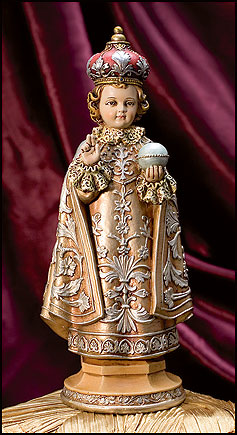Fil-Am Santo Niño Association
Santo Nino Procession and Feast Day
History of the Santo Nino –
The image of the Santo Niño is kept in the Santo Niño Chapel of the Basilica Minore Del Santo Niño de Cebu. It is considered the oldest religious relic in the Philippines.
In April 1521, Ferdinand Magellan, in the service of Charles V of Spain, arrived in Cebu during his voyage to find a westward route to the Indies. He persuaded Rajah Humabon and his chief wife Humaway, to pledge their allegiance to Spain. They were later baptised into the Catholic faith, taking the Christian names Carlos (after Charles V) and Juana (after Joanna of Castile, his mother).
According to Antonio Pigafetta, Italian chronicler to the Spanish expedition, Ferdinand Magellan handed Pigafetta the image to be given to the Rajah’s wife right after the baptismal rite officiated by Padre Pedro Valderrama. It was Pigafetta himself who personally presented the Santo Niño to the newly baptised Queen Juana as a symbol of the alliance, her newly baptized husband King Carlos, Magellan presented the bust of “Ecce Homo”, or the depiction of Christ before Pontius Pilate. He also presented an image of the Virgin Mary to the natives who were baptised after their rulers. Magellan died on 27 April 1521 in the Battle of Mactan. Legends say that after initial efforts by the natives to destroy it, the image was venerated as the animist creation deity Bathala] Many historians consider the facial structure of the statue made from Belgium, where Infant Jesus of Prague statues were also common.
Forty-four years after Magellan’s soldiers left, the next Spanish expedition arrived on April 27, 1565, led by Miguel López de Legazpi. He found the natives hostile, fearing retribution for Magellan’s death, and the village caught on fire in the ensuing conflict. The next day Spanish mariner Juan de Camus found the image of the Santo Niño in a pine box amidst the ruins of a burnt house. The image, carved from wood and coated with paint, stood 30 centimetres tall, and wore a loose velvet garment, a gilded neck chain and a woolen red hood. A golden sphere, a replica of the world, was in the left hand, and the right hand is slightly raised in benediction. Camus presented the image to Miguel López de Legazpi and the Augustinian priests; the natives refused to associate it with the gift of Magellan, claiming it had existed there since ancient times. Writer Dr. Resil Mojares wrote that the natives did so for fear that the Spaniards would demand it back. The natives’ version of the origin of the Santo Niño is in the Agipo (stump or driftwood) legend, which states that the statue was caught by a fisherman who chose to get rid of it, only to have it returned with a plentiful harvest.
The statue was later taken out for procession, afterwards which Legazpi then ordered the creation of the Confraternity of the Santo Niño de Cebú, appointing Father Andrés de Urdaneta as head superior. Legazpi instituted a fiesta to commemorate the finding of the image, and the original celebration still survives.
The Minor Basilica of Santo Niño (Spanish: Basilica Menor del Santo Niño) was built on the spot where the image was found by Juan de Camus. The parish was originally made out of bamboo and mangrove palm and claims to be the oldest parish in the Philippines. Pope Paul VI elevated its rank as Minor Basilica on its 400th year anniversary.
Ministry Interest Form



